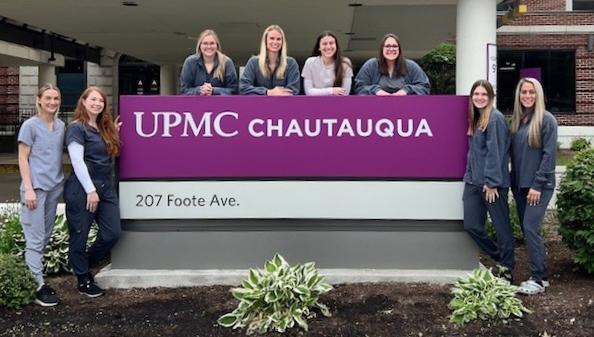Mission Statement

Congratulations to our 2024 Graduates
The Profession
A rewarding career in medicine and science awaits those who choose radiology as a career. The Radiologic Technologist plays an important role on the medical team assisting the Radiologist, a physician who is specialized in radiology, treating and diagnosing the sick and injured. Radiographers use x-ray equipment to produce images of the tissue, organs, bones and vessels of the body. Some radiographers specialize in mammography, computed tomography (CT scans), magnetic resonance imaging (MRI) or various other types of imaging.
The field of Radiology is part science and part art so whether you consider yourself technically adept or not, you will be comfortable studying your chosen profession as a Radiologic Technologist. You’ll work with some of the most technologically advanced equipment learning how to use computers to acquire and manipulate images. You will also learn to communicate with the patients giving you the ability to solve problems and to work efficiently with other members of the healthcare team. You will develop skills during your training that allows you to provide patient care that is accurate as well as compassionate.
Our Goals
Goal: To produce competent Radiologic Technologists who hold entry-level clinical skills for employment.
Student Learning Outcomes:
- Students will be able to demonstrate exceptional positioning skills
- Students will practice radiation protection for patients and themselves.
- Students will be able to apply classroom knowledge to the clinical setting.
Goal: To produce Radiologic Technologists who can demonstrate critical thinking skills, allowing them to meet the patients needs in the clinical setting.
Student Learning Outcomes:
- Students will evaluate radiographic images to understand how and when to adjust.
- Students will be able to employ critical thinking skills when performing non-routine exams.
- Students will be able to adapt to the different levels of patients they are in contact with by using critical thinking skills.
Goal: To produce Radiologic Technologists who have excellent communication skills.
Student Learning Outcomes:
- Students will be able to demonstrate communication skills to patients and co-workers.
- Students have shown an improvement in oral communication during their educational training.
Goal: To monitor overall program effectiveness to ensure we are meeting the needs of the students.
Student Learning Outcomes:
- Ensure the students are able to complete the program on time.
- To monitor graduates success rates of the ARRT exam.
- To monitor employer satisfaction with the graduates.
- To monitor graduates satisfaction with the overall program.
- To monitor employment rate.
Program Effectiveness Data
Credentialing Examination: The number of students who pass, on the first attempt, the American Registry of Radiologic Technologists (ARRT) certification examination, or an unrestricted state licensing examination, compared with the number of graduates who take the examination within six months of graduation. The five-year average benchmark established by the JRCERT is 75%
Credentialing Exam Rate
Number of passed on the 1st attempt, divided by the number of attempted within 6 months of graduation
YEAR
RESULTS
Year 1 – 2023
Year 2 – 2022
Year 3 – 2021
Year 4 – 2020
Year 5 – 2019
Program 5 Year Average
6 of 6 = 100%
6 of 6 = 100%
4 of 6 = 80%
4 of 5 = 67%
6 of 6 = 100%
26 of 29 = 90%
Job Placement: The number of graduates employed in the radiologic sciences compared to the number of graduates actively seeking employment in the radiologic sciences within twelve months of graduating. The five-year average benchmark established by the JRCERT is 75%.
Job Placement Rate
Number of passed on the 1st attempt, divided by the number of attempted within 6 months of graduation
YEAR
RESULTS
Year 1 – 2023
Year 2 – 2022
Year 3 – 2021
Year 4 – 2020
Year 5 – 2019
Program 5 Year Average
6 of 6 = 100%
6 of 6 = 100%
6 of 6 = 100%
5 of 5 = 100%
6 of 6 = 100%
29 of 29 = 100%
Program Completion: The number of students who complete the program within the stated program length. The annual benchmark established by the program is 66%
Program Completion Rate
Number of passed on the 1st attempt, divided by the number of attempted within 6 months of graduation
YEAR
RESULTS
Year 2023
Annual Completion Rate
6 of 6 = 100%
100%
UPMC Chautauqua School of Radiology program is accredited by the Joint Review Committee on Education in Radiologic Technology. 20 North Wacker Drive, Suite 2850, Chicago, IL, 60606-3182. 312-704-5300. Email: mail@jrcert.org. This program’s current accreditation award is 8 years. General program accreditation information and the current accreditation award letter can be found here: UPMC Chautauqua WCA – JRCERT
